Top 10 Best Practices in Software Development for 2025
When it comes to software development, following best practices can mean the difference between failure and success. This article will guide you through the top 10 best practices in software development that can streamline your workflow, improve code quality, and boost productivity. From requirements analysis to performance optimization, these practices are essential for any modern development team.
Key Takeaways
-
Thorough requirements analysis and gathering is essential for aligning software with stakeholder needs, including comprehensive documentation to maintain direction and standards.
-
Adopting Agile methodologies and integrating CI/CD practices enhances flexibility, promotes collaboration, and streamlines deployment processes, significantly improving development efficiency.
-
Emphasizing secure coding practices, automated testing, and regular code reviews ensures high software quality, reliability, and security, while fostering a culture of ownership among developers.


Requirements Analysis and Gathering
Every successful software development project begins with thorough requirements analysis and gathering. The initial step requires an understanding of stakeholder needs and the effort required to translate those needs into actionable specifications. It’s akin to laying down a solid foundation before constructing a building. Without it, the entire structure is prone to collapse.
Conducting user testing and gather feedback is an integral part of this process. Engaging users early ensures the software aligns with their needs and expectations. This step helps identify patterns and specific tasks the software must perform, ensuring no critical component is overlooked.
A comprehensive requirements specification document should include coding conventions, best practices, clear comments, and standardized conventions, including functional requirements. Comprehensive documentation helps developers maintain direction, mitigate deviations, and ensure cohesive software architecture, adhering to coding standards and software development standards.
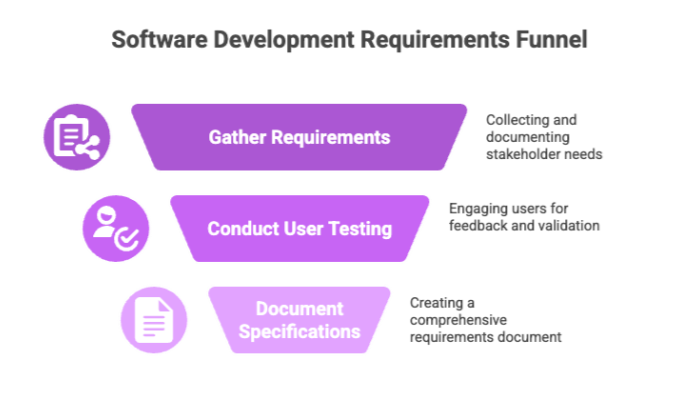

Adopting Agile Methodologies
In software development, agility is crucial. Agile methodologies, such as Scrum and Kanban, have revolutionized the way development teams operate. These methodologies promote collaboration, flexibility, and iterative development, allowing teams to adapt swiftly to changing requirements.One of the key advantages of agile software development is the ability to prioritize work during sprints. This approach enables development teams to address issues efficiently and adapt to new challenges as they arise. It’s akin to a GPS recalibrating its route based on real-time traffic updates, ensuring timely arrival.
Integrating Continuous Integration and Deployment (CI/CD) within agile practices enhances collaboration between development and operations teams. This synergy streamlines deployment, reduces errors, and keeps the development process smooth and efficient.
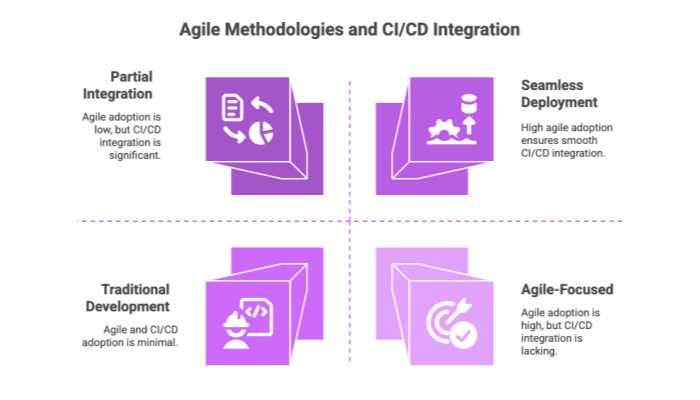

Version Control Systems
Version control systems are the unsung heroes of collaborative software development. They enable multiple users to work on their own copies of files, facilitating seamless collaboration and managing previous versions. Imagine a symphony where each musician plays their part independently, yet harmoniously.
Frequent change sharing is key to effective version control, minimizing conflicts and ensuring harmonious development. This practice is akin to a well-rehearsed orchestra where each instrument blends perfectly with the others.
Descriptive commit messages are another critical aspect of version control. These messages clarify and trace changes, making it easier for developers to follow the codebase evolution. It’s like leaving breadcrumbs that guide you back to the source of each change.
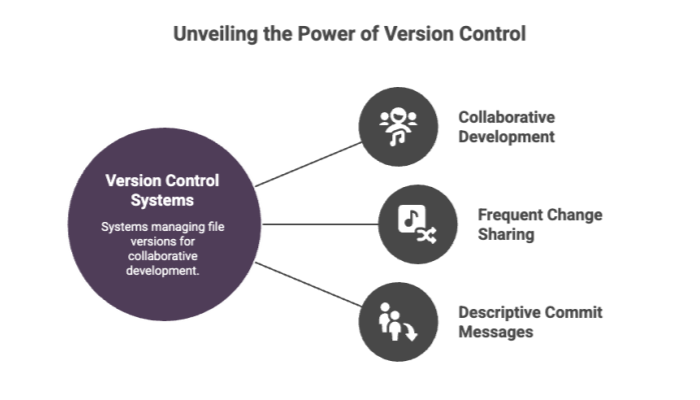

Code Reviews for Quality Assurance
Code reviews are a cornerstone of quality assurance in software development. They ensure that the code works not only functionally but also efficiently and error-free. Involving multiple developers in code review helps catch issues early, preventing escalation into major problems. When developers collaborate, they can effectively write code that meets high standards.The feedback mechanism provided by code reviews is invaluable. Other developers offer insights and suggestions, raising the code quality standard. It’s a collaborative effort that elevates the overall quality of the software, much like a team of editors refining a manuscript through peer reviews.
Requiring pre-merge code reviews catches potential issues before they affect the main codebase. This practice ensures that the code remains clean and maintainable, ultimately leading to higher quality software that is easier to manage and extend.
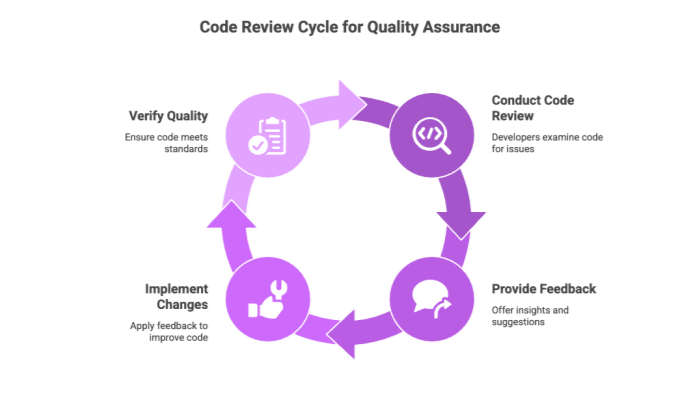

Automated Testing and Test Coverage
Automated testing is the secret weapon of efficient software development. While the initial setup may require significant effort, the long-term benefits are immense. Running automated tests during developing software helps automate testing issues early, streamlining releases and ensuring reliability.Consistent execution of automated tests minimizes the potential for human error. It’s akin to a tireless assistant checking every detail, ensuring nothing is overlooked. Automated testing supports various test types, including unit tests, integration tests, and performance tests, improving overall test coverage. When developers write tests, they enhance the reliability of the software.
In CI/CD, test automation reduces risks associated with deploying new code. Automated performance testing code can simulate different load conditions, helping to identify potential issues before they affect users. This proactive approach ensures that the software remains robust and efficient.


Secure Coding Practices
Security is a paramount concern in software development, with various security considerations. Practices like input validation and specifying character sets for inputs are essential for secure coding in software design. These practices prevent common vulnerabilities like SQL injection and cross-site scripting, ensuring that the software remains secure.
Robust authentication mechanisms and secure session identifier generation are critical components of secure coded coding. Enforcing these practices protects user credentials and maintains software integrity.
Regular penetration testing and continuous monitoring for vulnerabilities are necessary post-deployment. This ongoing vigilance ensures that the software remains secure in the face of emerging threats, safeguarding both the developers and users. To stay up to date, it is essential to maintain these practices.
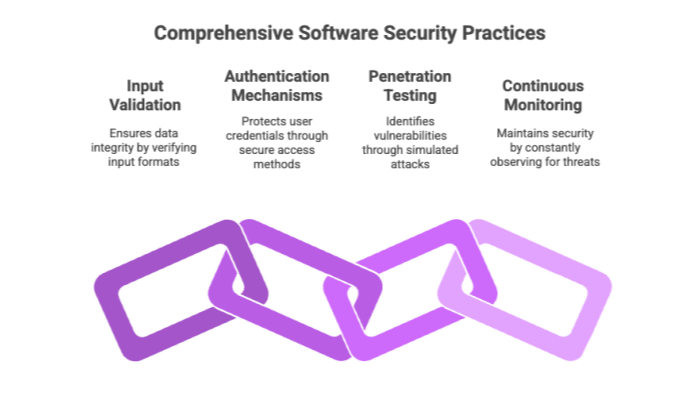

Continuous Integration and Deployment (CI/CD)
Consistency and reliability are the hallmarks of successful software development, and Continuous Integration and Deployment (CI/CD) practices play a crucial role in achieving these goals within the software development process. Automating build, test, and deployment processes keeps the software stable and functional throughout its deployment continuous integration lifecycle.
CI/CD enables continuous software updates, helping to avoid code failures and bugs. This practice significantly reduces the complexity associated with larger applications by streamlining workflows and enabling rapid deployment of changes.
The efficiency brought by CI/CD practices is unparalleled. Changes can go live within minutes, assuming all tests are passed. This rapid deployment capability reduces downtime and accelerates development speed, ensuring that software development projects remain on track, ultimately optimizing development time.
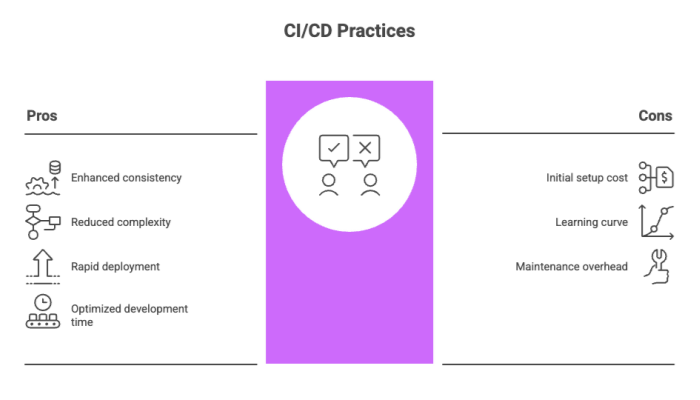

Documentation and Code Comments
Good documentation is vital. It enhances code comprehension, allowing developers to quickly understand different code segments. This good practice is particularly beneficial for onboarding new developers, helping them understand the project and its standards while writing code.
Clear and regularly updated documentation reduces the time required for developers to modify or fix code, minimizing errors. Inline comments provide immediate context about the purpose and functionality of specific sections, enhancing code readability and maintainability.
Standardized documentation formats improve readability and navigation. This practice ensures that all team members are on the same page, fostering collaboration and efficiency in the development process and adhering to naming conventions while promoting effective code organization.
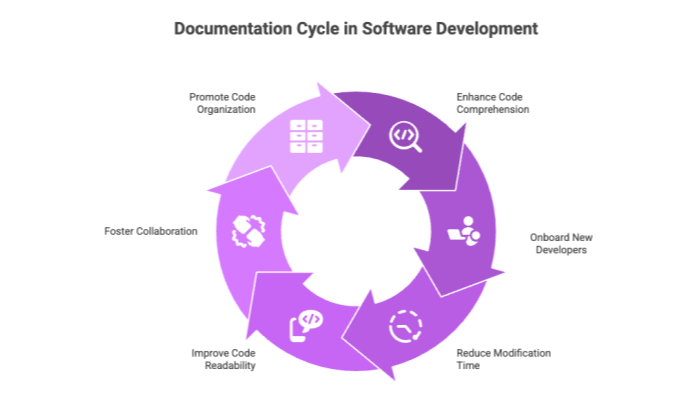

Performance Optimization
Performance optimization is crucial for improving application speed, reliability, and user satisfaction. Identifying performance bottlenecks early enhances software efficiency. Continuous monitoring identifies performance issues in real-time, allowing prompt resolution.Regular code refactoring eliminates inefficiencies, ensuring the software remains performant and scalable. Techniques like lazy loading and database optimization can significantly enhance performance by loading individual components only when needed and improving data retrieval speeds, leading to more efficient code structure, effective design patterns, and necessary code changes.
Developers who own their services actively monitor performance and tackle technical debt. This proactive approach ensures that the high quality software remains efficient and delivers a superior user experience.
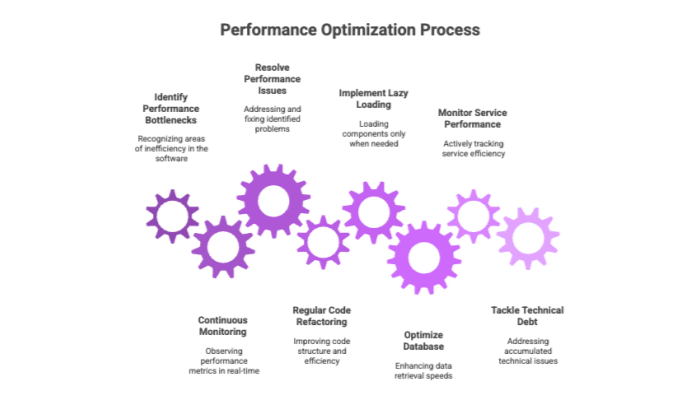

Emphasizing Software Ownership
Promoting a culture of ownership fosters accountability and proactive involvement among developers. When developers take ownership of their work, they experience pride and commitment to improving software outcomes. This ownership leads to higher-quality software and proactive performance monitoring.
Developers who own their services, including software developers, are more likely to effectively resolve technical debt, ensuring maintainable and efficient software. This proactive approach directly leads to enhanced software quality and performance, benefiting both the development team and end-users.
Encouraging software ownership results in a more cohesive and motivated team, driving project management software projects success.
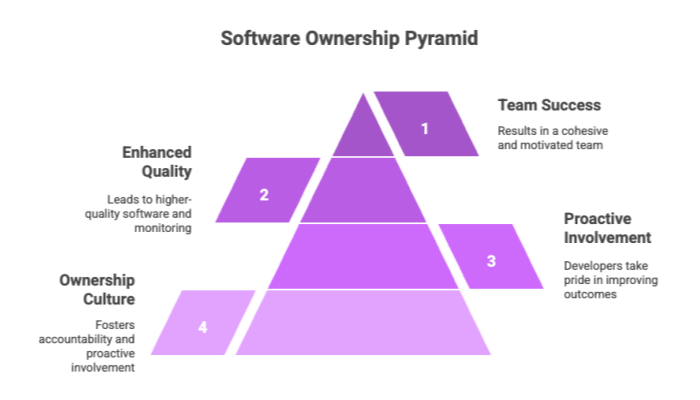

Summary
In 2025, successful software starts with clear requirements: engage stakeholders, validate with users, and document specs and conventions. Pair Agile workflows (Scrum or Kanban) with CI/CD to deliver small, tested increments rapidly and reliably. Use disciplined version control—frequent commits, branches, and clear messages—to collaborate safely.
Enforce peer code reviews and a robust suite of automated tests (unit, integration, performance) to catch bugs early and prevent regressions. Build in secure coding from day one—validate inputs, manage authentication properly, and defend against common vulnerabilities—while continuing post-release security testing. Keep documentation up-to-date, both inline and external, to speed onboarding and maintenance. Continuously profile and optimize performance (lazy loading, indexing, refactoring) to avoid technical debt.
Finally, foster a culture of ownership, where developers monitor, alert, and improve their services end to end—ensuring pride, accountability, and long-term software excellence.

Frequently Asked Questions
In this section, we address some common questions about best practices in software development, highlighting key concepts such as programming languages, source code management, business logic implementation, and the importance of testing in a controlled environment.
We also touch on challenges related to complex algorithms, security vulnerabilities, and the integration of new features in modern software applications, including web applications and software products. Whether you are a junior developer or an experienced software engineer, these FAQs provide valuable insights to help you navigate the software development process effectively.
Why is requirements analysis important in software development?
Requirements analysis is crucial in software development as it translates stakeholder needs into actionable specifications, ensuring that the software effectively meets user requirements and expectations. This foundational process minimizes the risk of project failure and enhances overall product quality.
How do agile methodologies benefit software development?
Agile methodologies significantly enhance software development by promoting collaboration, flexibility, and iterative processes, enabling teams to rapidly adapt to evolving requirements. This approach ultimately leads to more efficient project management and improved product quality.
What is the role of version control systems in software development?
Version control systems play a crucial role in software development by enabling collaboration among multiple users, allowing them to work on their own file copies while minimizing conflicts through regular changes sharing. This enhances project efficiency and team coordination.
Why are code reviews crucial for quality assurance?
Code reviews are crucial for quality assurance as they enhance code quality and efficiency by enabling multiple developers to identify and rectify potential issues early in the development process. This collaborative approach significantly reduces the likelihood of errors in the final product.
How does automated testing improve the development process?
Automated testing enhances the development process by streamlining the release cycle, reducing human error, and increasing test coverage, ultimately leading to more reliable software. This systematic approach contributes significantly to overall efficiency and quality in development.


